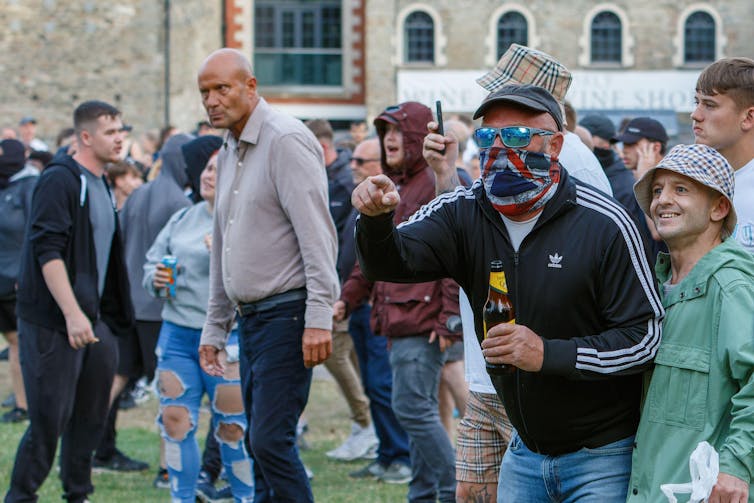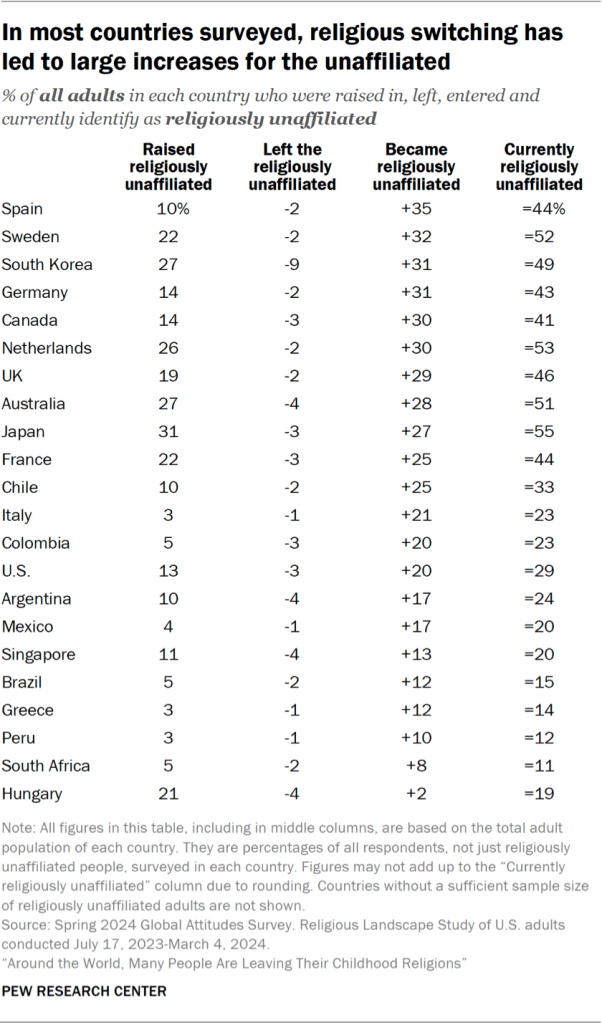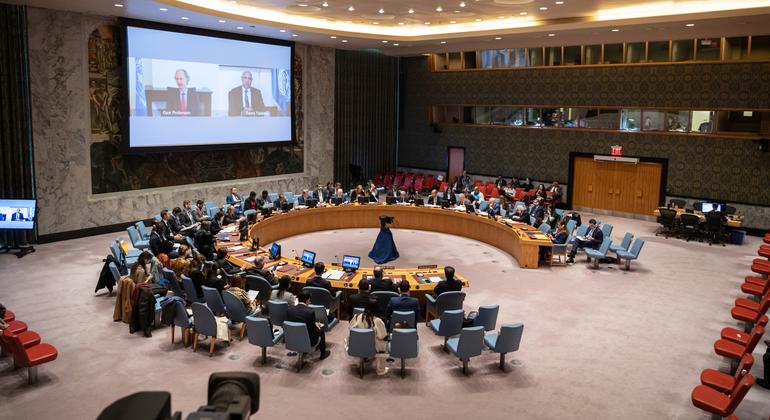The UK has experienced more than a week of violent rioting, during which white nationalists have marauded through towns and cities, fighting with police and calling for borders to be closed to keep out immigrants. Gangs have intimidated non-white citizens and laid siege to hotels housing vulnerable asylum seekers. Arrests are underway and some people have already been jailed.
Online disinformation has been a significant factor in these incidents, but the picture is complex. In this selection of articles, experts help us understand what happened to cause this dark episode.
1. The middle-aged radicals
A particular demographic was in evidence among the hordes of people clashing with police in English towns and cities in recent days. A surprising number of men in their 40s and 50s were filmed screaming unspeakable racism as though it were indisputable fact.
Researchers funded by the European Union say they’ve come across such people during their investigations into what is being called middle-aged radicalisation.
What seems to be happening is a toxic generational idiosyncrasy. A group of people too old to be digital natives taught themselves how to use the internet in adulthood and failed to emerge with the skills needed to navigate the fake news environment. These same people also happen to be more influential in their communities than younger, more internet-savvy generations.
So they are both prone to falling for conspiracy theories and well placed to spread them:
When groups of any kind are ignored, their feelings of exclusion and isolation make the fringes of the internet more appealing. Here, disgruntlement is fed and encouraged. People are invited to express their anger as they engage with peers of a similar age and socio-economic group.
The fact that middle-aged people are often culturally overlooked has not helped, either.
Alamy

Want more politics coverage from academic experts? Every week, we bring you informed analysis of developments in government and fact check the claims being made.
Sign up for our weekly politics newsletter, delivered every Friday.
2. The political elites who enabled Islamophobia
Initially, the unrest was triggered by misinformation spread about the identity of a teenager who has been arrested over the deaths of three children in a mass knife attack in the northern town of Southport on July 29. It was incorrectly suggested that he was a Muslim and an immigrant. That night, a group descended on a local mosque and attacked.
Even when the disinformation was corrected, hotels housing asylum seekers continued to be targets. Shocking scenes from Rotherham saw one set on fire. Every subsequent scene of unrest has been characterised by racist chanting and threats.

Alamy
Chris Allen has been writing for The Conversation about Islamophobia for years. He looks back at how it came to be the case that the UK’s Muslim population could be so brazenly terrorised in their homes and places of worship in this frank piece about the complicity of many of the country’s politicians.
He highlights how the recently deposed Conservative government fought an election on a platform of antagonism towards immigrants and allowed its leaders (including former prime minister Boris Johnson) to spread brazen hatred about Muslims.
But the blame is not confined to the right and must be shared across the political spectrum:
Few politicians can be seen to truly care about Islamophobia. As a result, it is rendered unimportant by most politicians and the parties they represent. Despite some paying lip service to the matter, it always quickly disappears from the political agenda.
3. The phoney ‘masculinity’ of racists
That the victims of the Southport knife attack were young girls provided an opportunity for nationalist extremists to paint themselves as defenders of women and children. Placards reading “save our kids” became a common sight at the far-right gatherings.
This is a familiar refrain that has been internalised by ultra nationalists, writes terrorism expert Elizabeth Pearson:
White supremacy is founded on the narrative of a specifically gendered and racialised threat – the threat from “other” men to “native” women and children. This idea is the undercurrent to the Nazi slogan kinder küche, kirche (children, kitchen, church) which situates women inside and men outside the home. It’s explicit in the so-called “14 words”, the most famous slogan in white nationalism, which urges followers to “secure a future” for white children.
In these protests, we’re witnessing a dangerous convergence of old-fashioned racism and modern “manosphere” tropes that call on men to get fighting fit to defend “their” people. And of course, as is so often the case, influencer Andrew Tate had plenty to say on the matter as the week unfolded.
4. The unspoken problem of English nationalism
Those outside the UK should note that while we do refer to this as a British problem, it’s technically the case that the riots have been almost exclusively confined to England. There were incidents in Northern Ireland but not in Scotland or Wales, the other two nations of the UK.
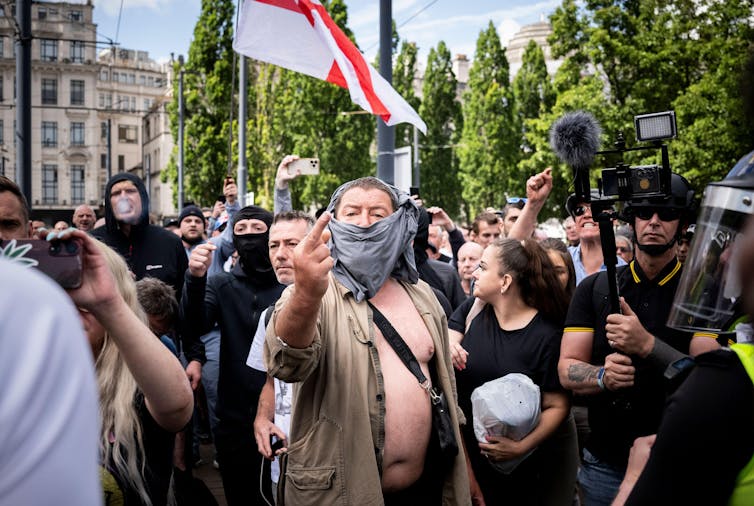
Alamy/Benjamin Wareing
This geographic detail is absolutely fundamental to understanding the problem, since a particular form of English nationalism has been festering in our politics for some time.
Brexit is part of the picture but so is the slightly more mundane concept of devolution. Scotland and Wales are culturally and politically different since the 1997 act that gave them their own governments. England, by contrast, has no legislature of its own. This appears to have contributed to feelings of resentment and fuelled anti-immigrant sentiment.
5. The hypocrisy of in-group logic
Mere weeks before the Southport attack, another tragedy happened in a British town. In this case, a white man killed a young black boy called Daniel Anjorin with a sword.
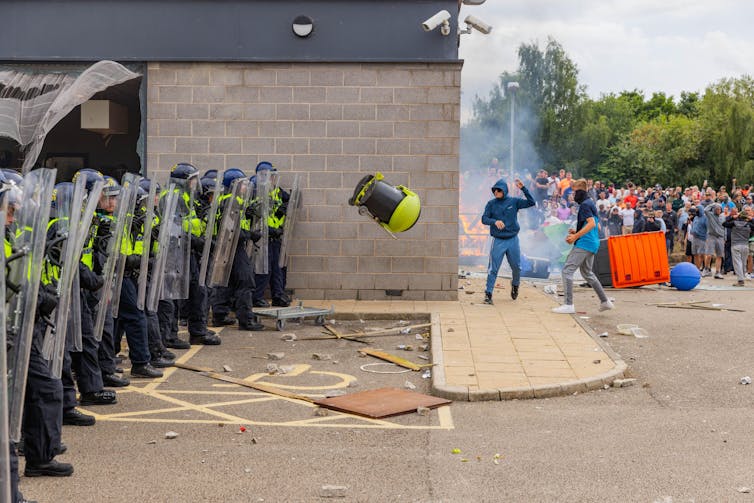
Alamy
The murder triggered no rioting whatsoever, which is key to our understanding of what’s really going on in the UK, writes Nilufar Ahmed. While the white man was treated as an exceptional case, the Southport attacker was treated as representative of an entire group of people:
This automatic psychological response explains how people can see the self and the in-group as complex and fluid (for example, not all white people are criminals) but frame the out-group as homogeneous and fixed. This can lead, as we’ve seen, to some people casting all black men as dangerous, Muslims as terrorists, asylum seekers as opportunistic and refugees as “taking” jobs and healthcare resources, justifying the dislike and even hatred of the out-group.
This in-group/out-group mentality is in evidence in other parts of British life, beyond the riots. Ahmed argues that this has created ideal conditions for scapegoating and racism.

